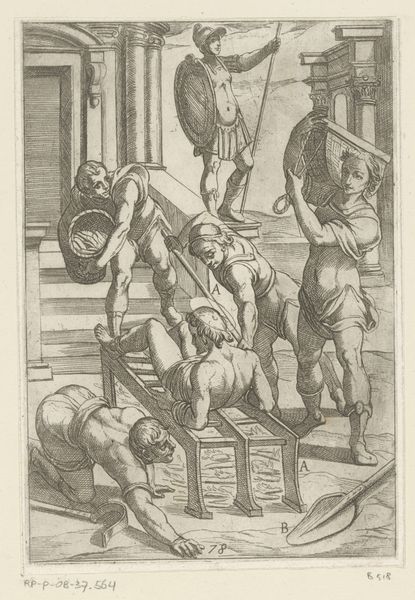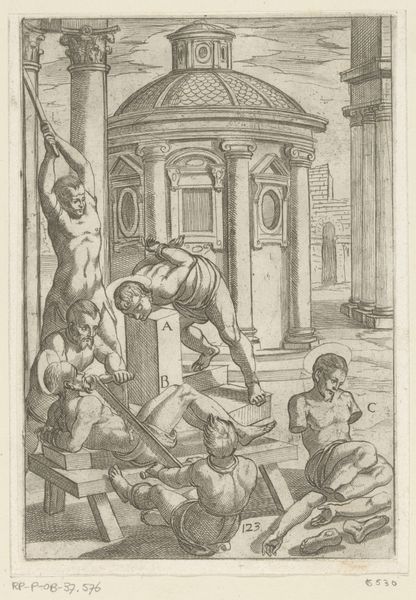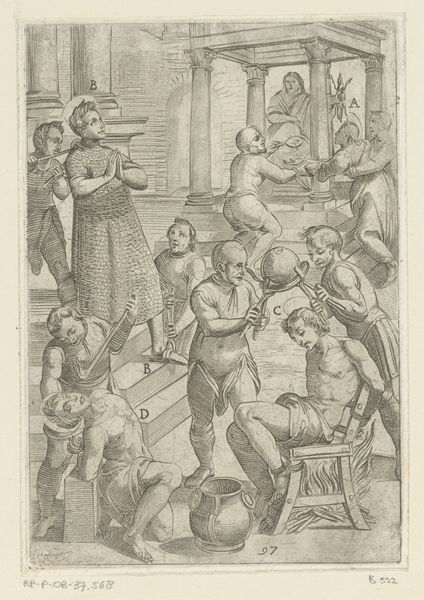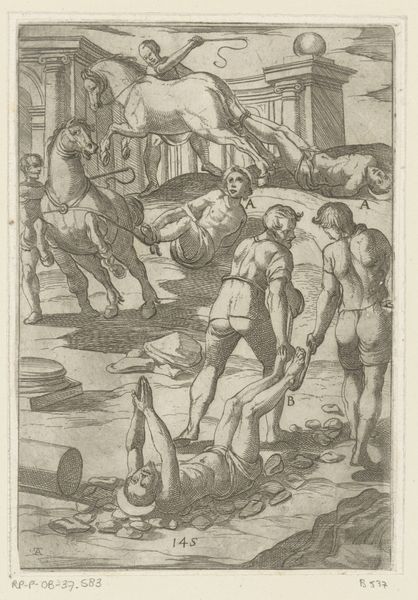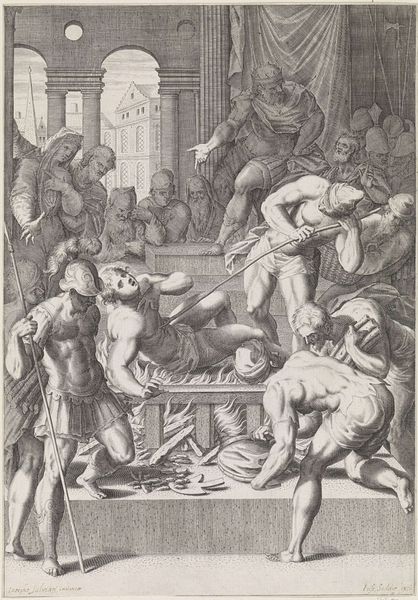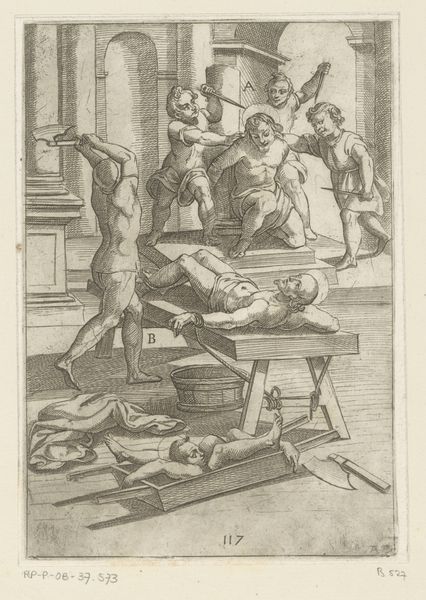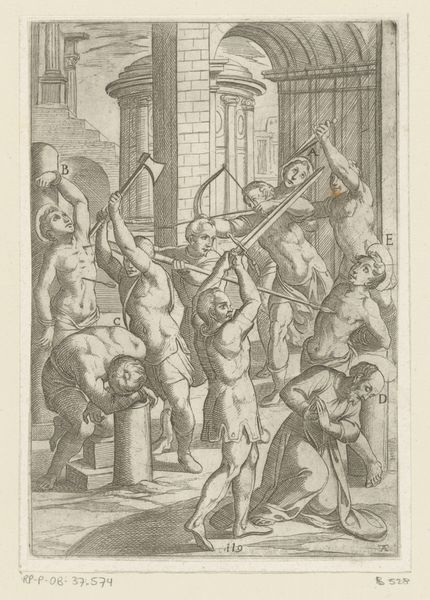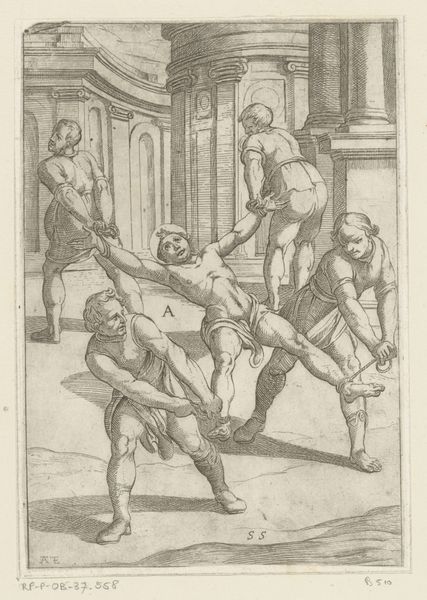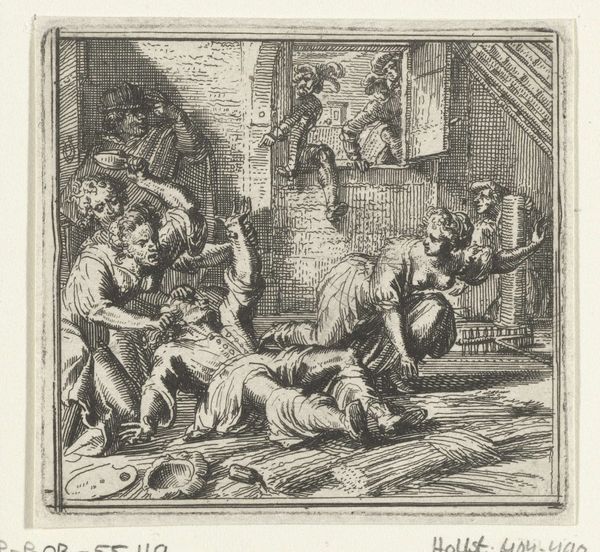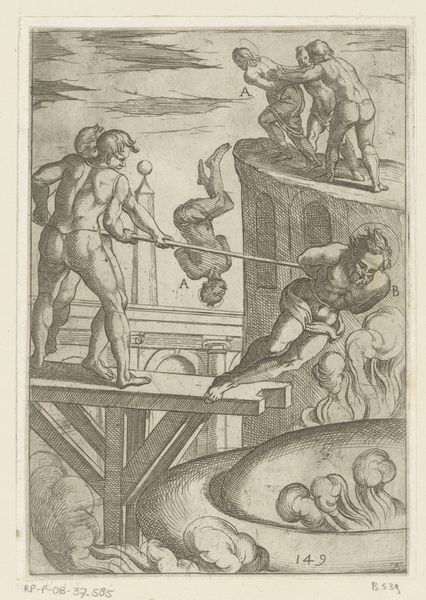
print, intaglio, engraving
#
baroque
# print
#
intaglio
#
old engraving style
#
mannerism
#
figuration
#
history-painting
#
engraving
Dimensions: height 194 mm, width 133 mm
Copyright: Rijks Museum: Open Domain
This engraving, "Foltering met uitrekking," was created by Antonio Tempesta in the late 16th or early 17th century. It vividly captures the act of torture, dominated by the rack—an instrument designed to stretch and break the human body. The motif of binding and bodily contortion is ancient. We see echoes in depictions of martyrs and mythological figures subjected to divine wrath. Consider, for instance, Prometheus bound to a rock, his liver eternally devoured, or the flaying of Marsyas by Apollo. In both, the body becomes a site of suffering, a canvas for power. The emotions evoked here are visceral: fear, pain, and the dread of helplessness. This primal scene taps into a collective memory of human cruelty, a dark inheritance that persists across cultures. Even today, in fragmented and distorted forms, the image of the tortured body resurfaces, a grim reminder of our capacity for inflicting pain. It is a testament to the cyclical nature of history, where old horrors find new expressions.
Comments
No comments
Be the first to comment and join the conversation on the ultimate creative platform.
